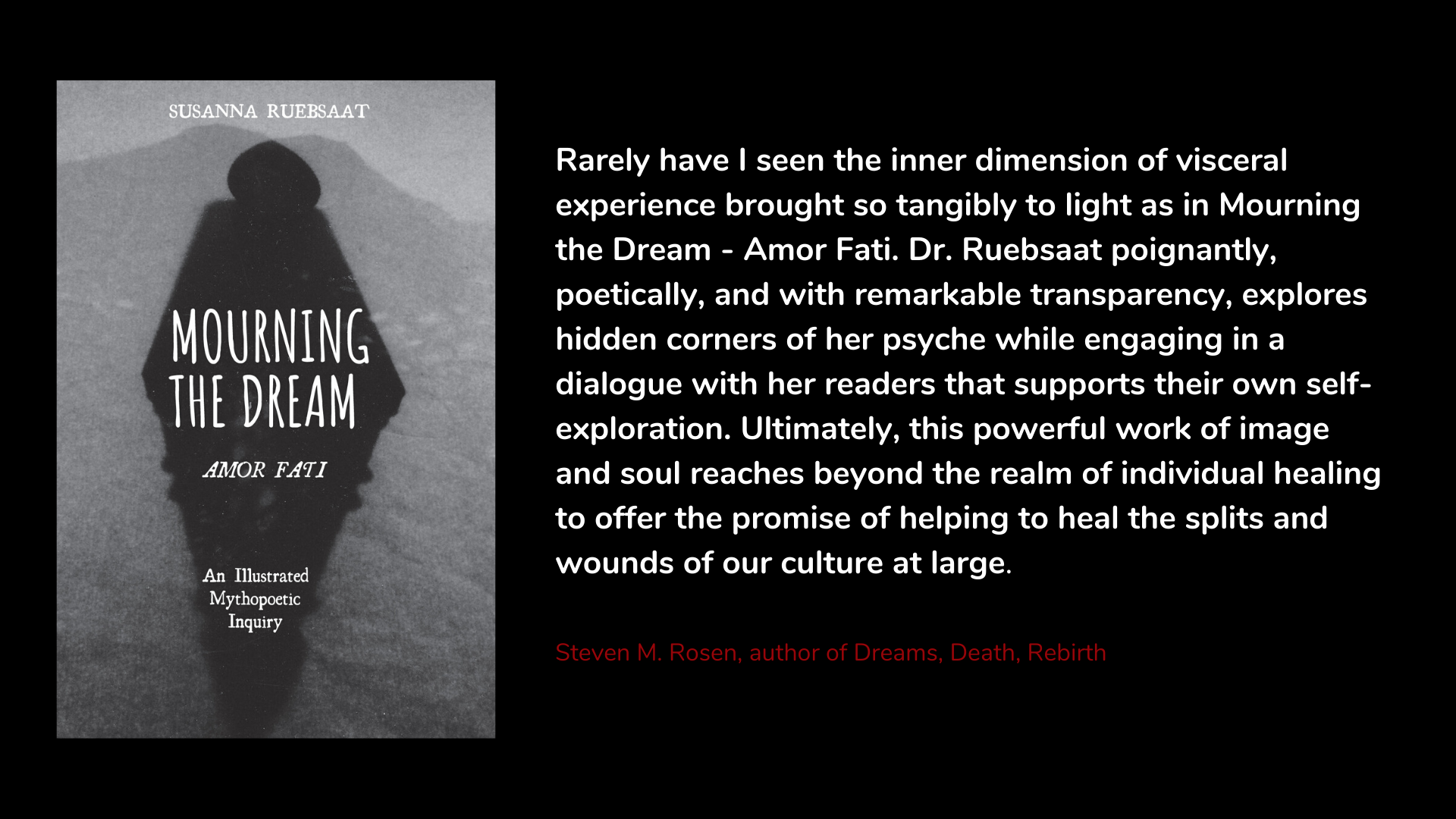Mourning the Dream - Amor Fati
An Illustrated Mythopoetic Inquiry
Susanna Ruebsaat, Ph.D.
The body of work in Mourning the Dream/Amor Fati is an invitation to experience the unconscious as it presents and expresses itself in image. The proposed imaginal spiral lens allows us to understand how the unconscious has the ability to embrace the invisible, that it has the depth and breadth to engage that which I/we are not conscious of, then show this to us through our bodies in embodied images. In this intricate process we can shift into experiencing ourselves simply a way of seeing, rather than remaining attached to who we think we are. We become the archetypal activist, the imaginal ego who can find the route to the mythopoetic through our own unconscious footsteps made visible in the creative process.
Central Notions:
- Seeing Symbolically
- Klein body
- Spiral Lens
- Flickers
- I Am Simply a Way of Seeing
- Presence
- Liminal
Methodology:
- Deep Democracy
- Archetypal Activism
- Embodied Imagination
- Reflecting and intuiting into the autonomy of image through which a new sense of presence becomes apparent
I wholeheartedly recommend this book to all. In fact, it reminds me of Christian Gaillard's work The Soul of Art. Susanna Ruebsaat's book is an exceptional blend of art, image, and meaning. (David H. Rosen, author of Transforming Depression: Healing the Soul through Creativity)
Symbolic awareness combines play of imagination with the distance to observe the inner unconscious process - we and our world are re-formed. Symbol, not yet an image, but more a felt sense of new direction, has an intensity that both pushes and draws us into the unlived life, driving us to live. Dr. Ruebsaat, through her words and art, shows us how to allow an emergence - a new container for life - as we learn to live. (Mary Barnes, retired RCC)
(Interview with Dr. Susanna Ruebsaat about her book and work)
About The Author

Susanna Ruebsaat is a Jungian-oriented art therapist, clinical counselor, and supervisor. She has developed a mythopoetic mentorship for practitioners wanting to bring an archetypal lens to their practice. Her experiential sessions in alchemical art therapy, working with soma and symbol, shape a mythopoetic inquiry that acts as a container for the metamorphosis of trauma. Dr. Ruebsaat also teaches mythopoetic inquiry and group art therapy at a training institute in British Columbia.







